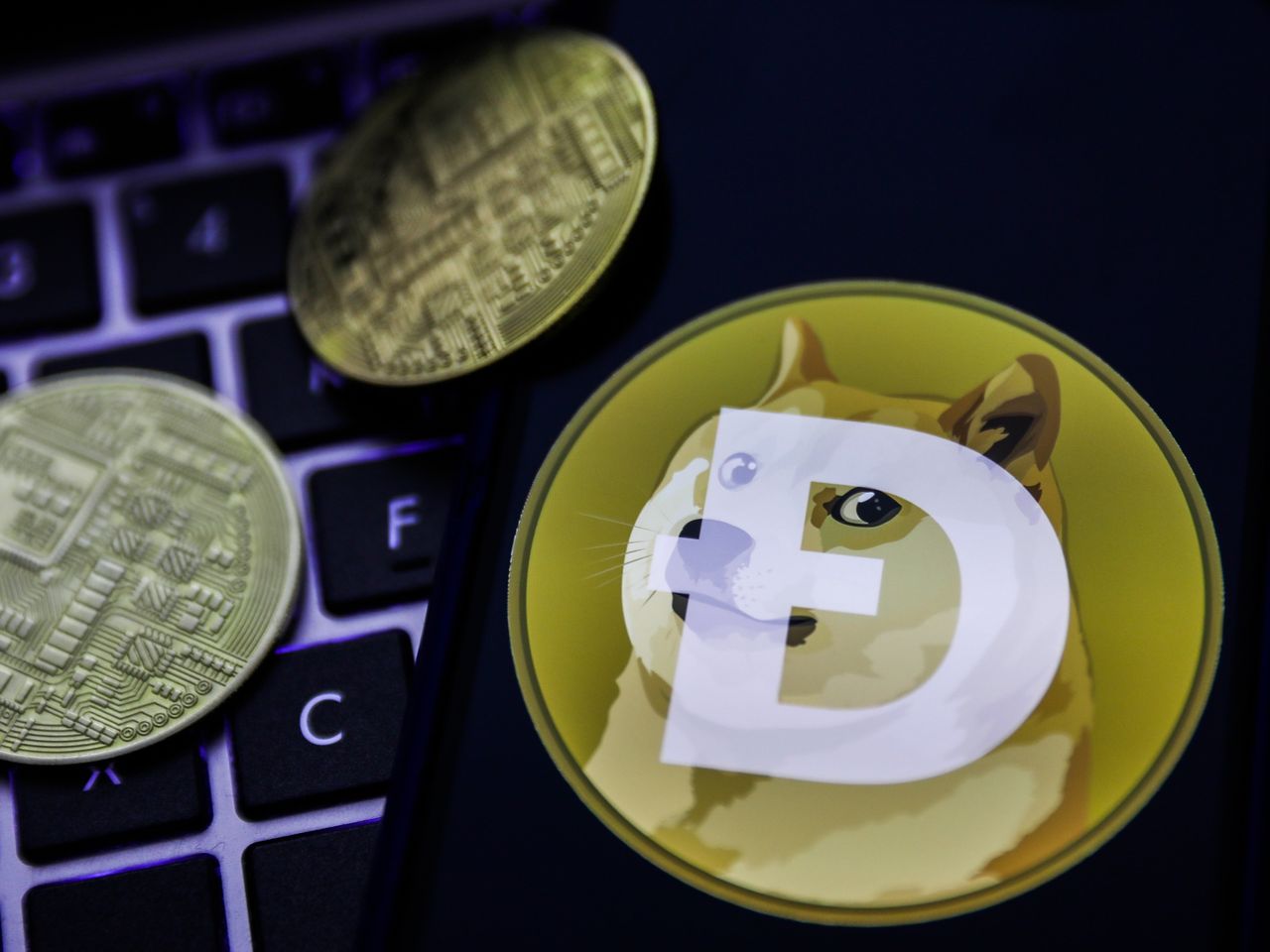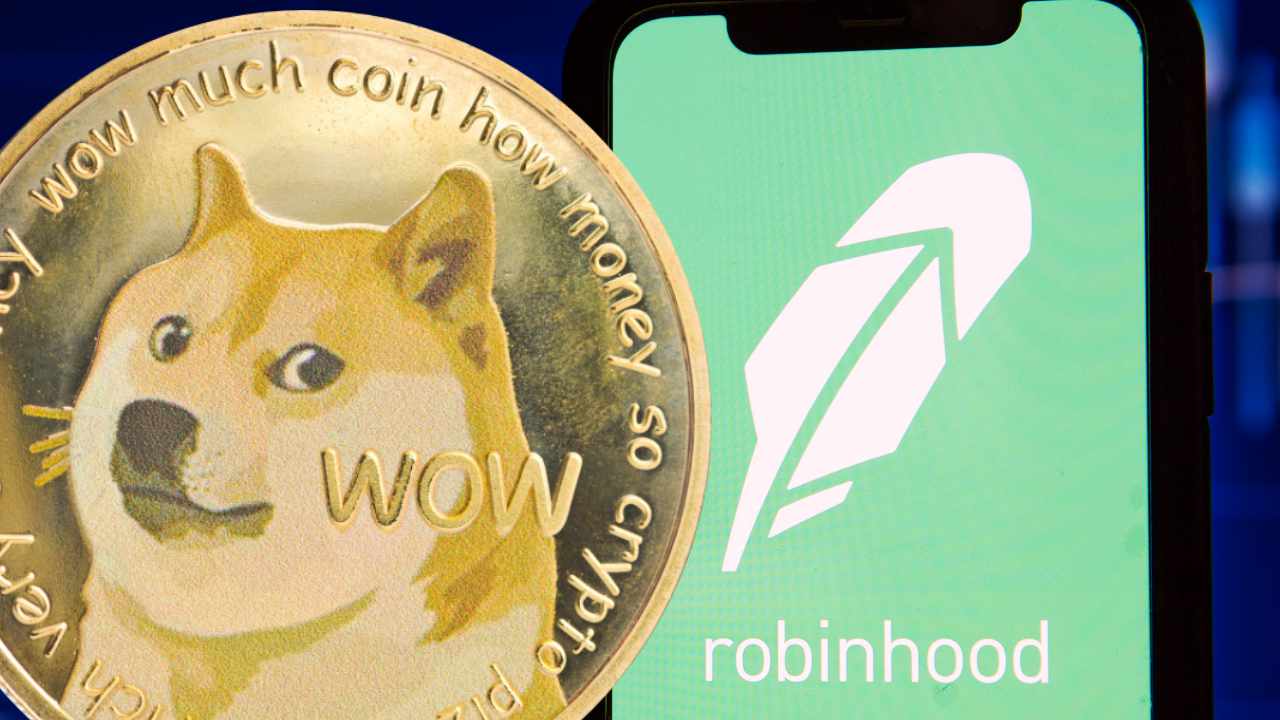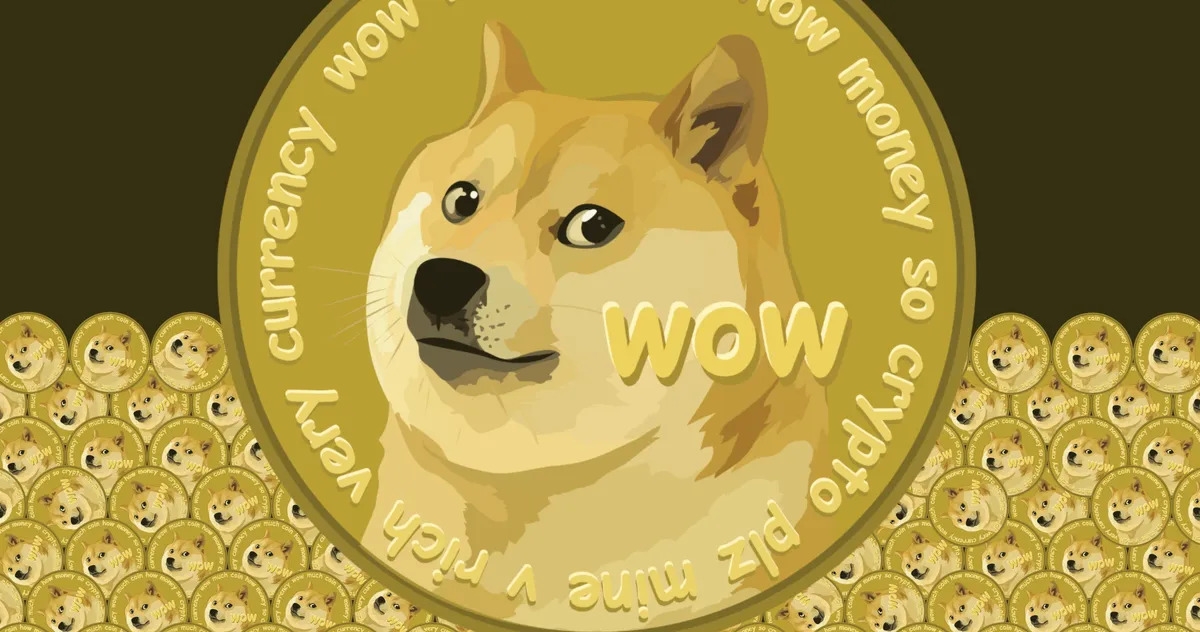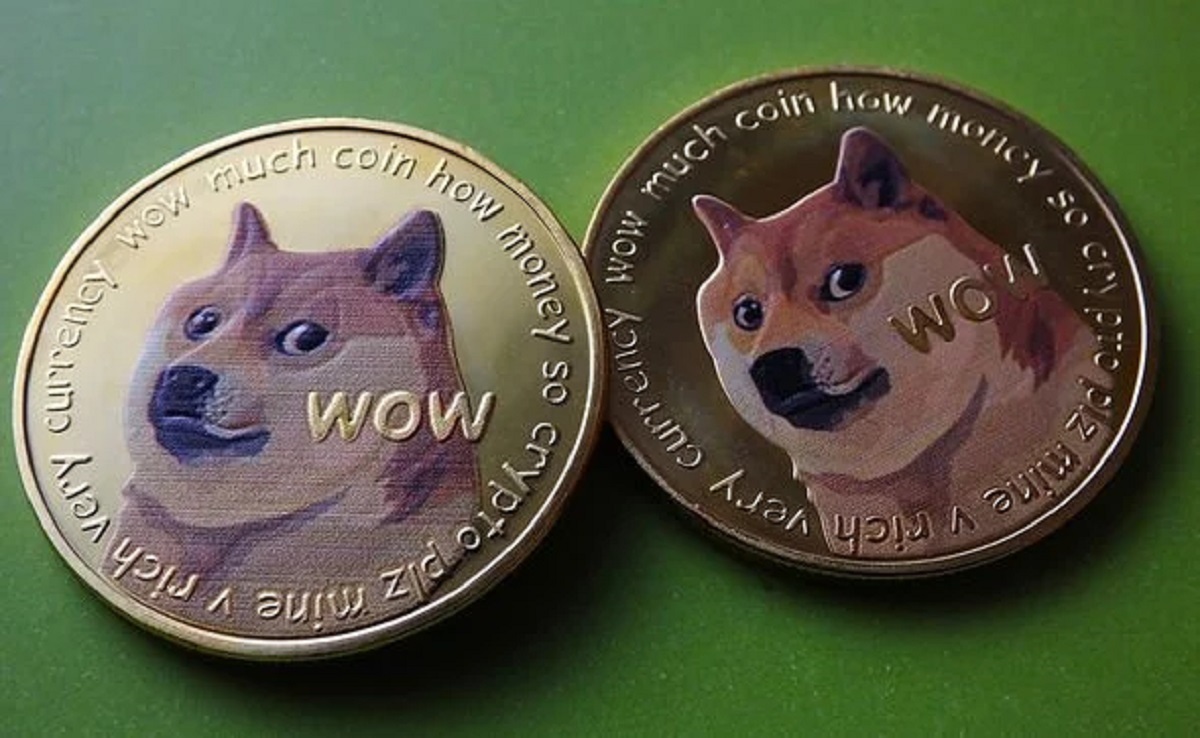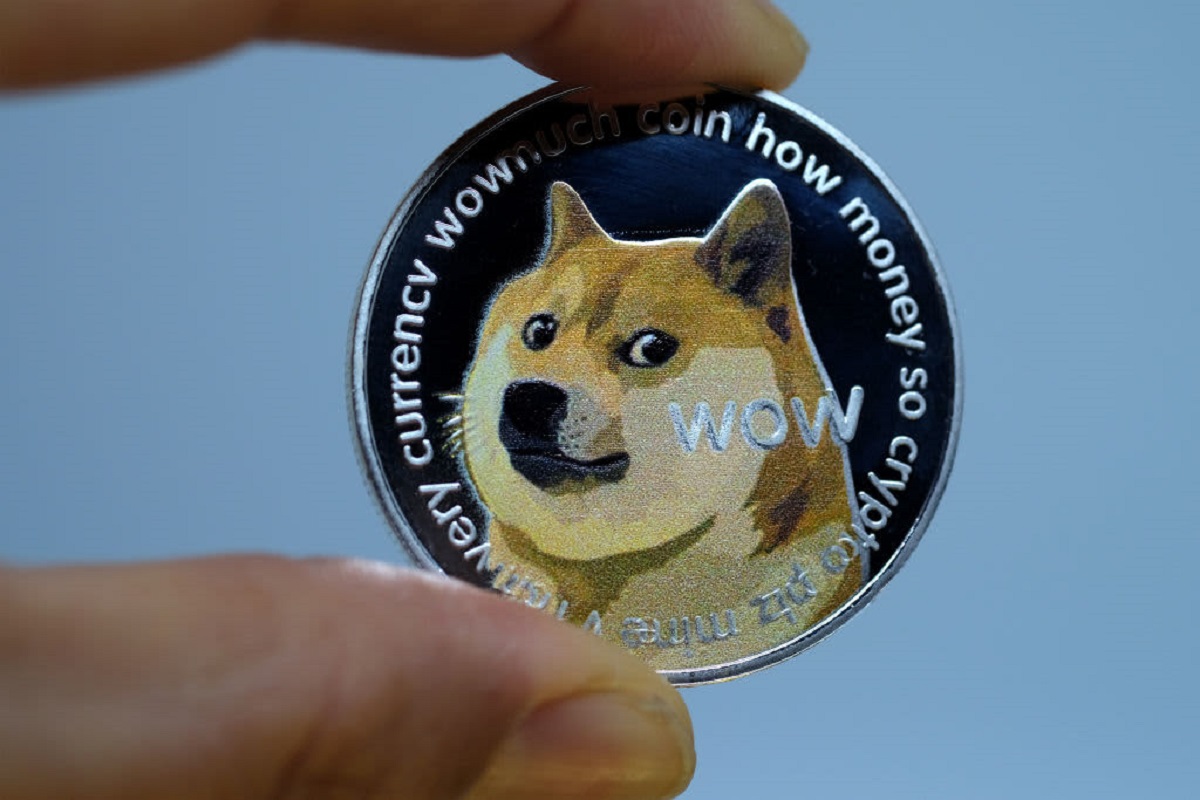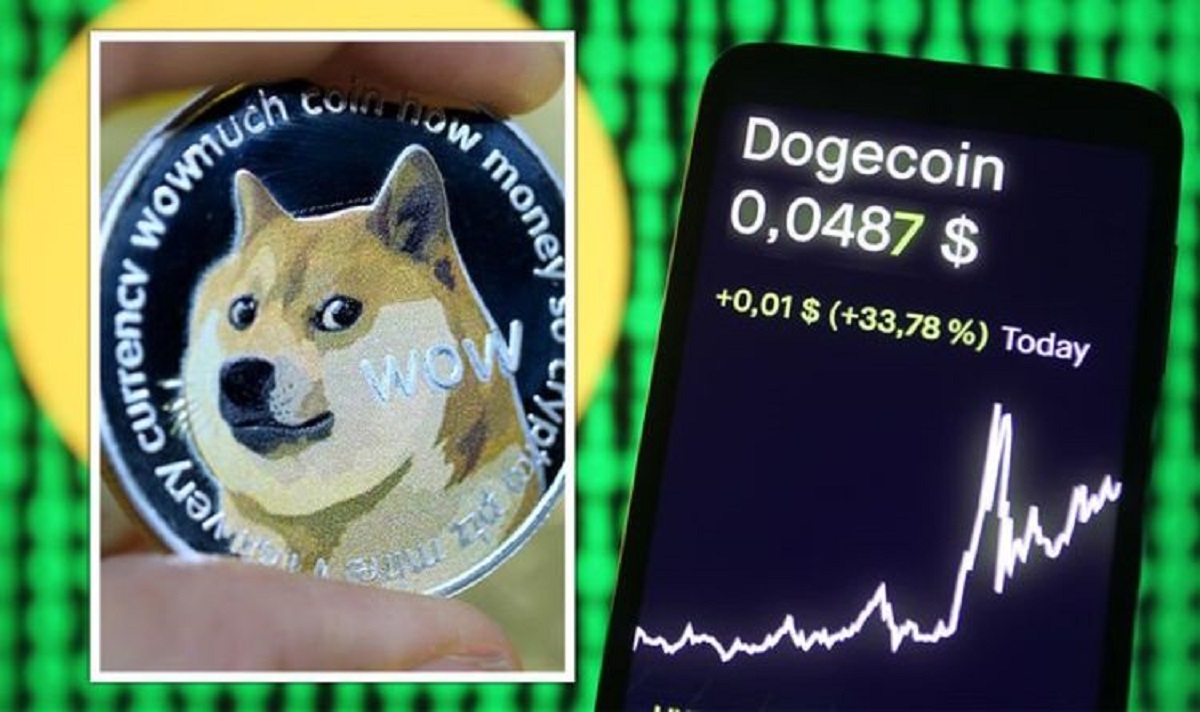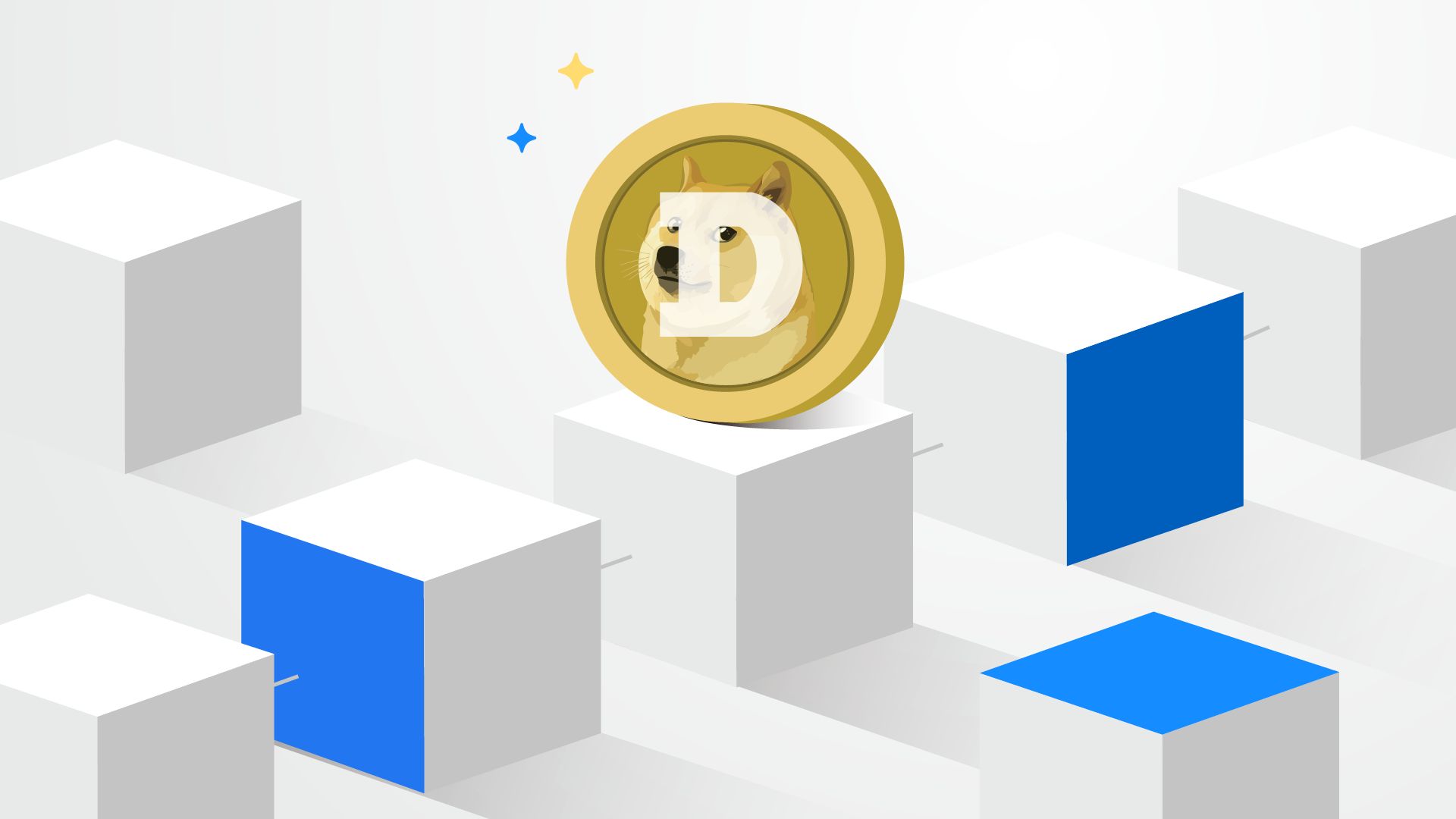Introduction
Welcome to the world of Dogecoin! If you’re new to the cryptocurrency scene, you might be wondering what Dogecoin is all about and how much of it is currently in circulation. Well, you’ve come to the right place. In this article, we’ll explore the basics of Dogecoin, how it is created, and delve into the fascinating topic of Dogecoin circulation.
Dogecoin burst onto the cryptocurrency scene in 2013 as a light-hearted, meme-inspired digital currency. Created by software engineers Billy Markus and Jackson Palmer, Dogecoin was intended to be a fun and friendly alternative to the more serious and complex cryptocurrencies like Bitcoin. It quickly gained popularity and developed a strong community of supporters, known as “shibes”, who embraced its playful nature and unique charm.
Similar to other cryptocurrencies, Dogecoin operates on a decentralized network called blockchain. However, unlike Bitcoin that has a limited supply of 21 million coins, Dogecoin takes a different approach. Dogecoin has an infinite max supply, meaning there is no cap on the number of Dogecoins that can be created. This leads us to the concept of Dogecoin circulation.
How much Dogecoin is currently in circulation? At the time of writing this article, there are approximately XXX billion Dogecoins in circulation. The exact number is constantly changing due to factors such as mining, transactions, and new coins being minted. Let’s explore the process of Dogecoin creation and the factors that influence its circulation in more detail.
What is Dogecoin?
Dogecoin is a cryptocurrency that was introduced in December 2013. It began as a joke or a meme currency, inspired by the popular “Doge” Shiba Inu dog meme that circulated on the internet. However, what started as a fun and humorous project quickly gained traction and became a legitimate digital currency with a passionate community behind it.
Similar to Bitcoin and other cryptocurrencies, Dogecoin operates on a decentralized network using blockchain technology. It allows users to send and receive payments securely and anonymously. Transactions are recorded on the Dogecoin blockchain, making it transparent and resistant to tampering.
One of the distinctive features of Dogecoin is its inflationary supply. Unlike Bitcoin, which has a limited supply of 21 million coins, Dogecoin has no maximum supply. Instead, it has a steadily increasing supply, with new coins being minted continuously through the process of mining.
Dogecoin’s light-hearted and friendly nature sets it apart from other cryptocurrencies. The use of the Shiba Inu dog meme as its logo and the community’s generous spirit have contributed to its unique identity. Dogecoin has gained recognition for its involvement in various charitable initiatives, such as sponsoring athletes, supporting clean water projects, and contributing to disaster relief efforts.
Since its creation, Dogecoin has gained a substantial following and has become popular among cryptocurrency enthusiasts and the broader online community. Its accessibility and low transaction fees make it an attractive choice for microtransactions and tipping content creators, further adding to its widespread usage.
Despite originating as a joke currency, Dogecoin has grown into a significant player in the cryptocurrency market. Its growing popularity and active community have led to integration with various online platforms and the development of a wide range of applications.
In the next sections, we will explore how Dogecoin is created, the process of Dogecoin mining, and the factors that influence Dogecoin circulation.
How is Dogecoin Created?
Dogecoin is created through a process called mining. Similar to other cryptocurrencies, mining involves solving complex mathematical problems to validate and secure transactions on the Dogecoin network.
Miners play a crucial role in the Dogecoin ecosystem. They use their computational power to process and validate transactions, ensuring the integrity of the blockchain. In return for their efforts, miners have the chance to earn newly minted Dogecoins as a reward.
The mining process starts with miners competing to solve a mathematical puzzle. This puzzle requires substantial computational power, as well as a significant amount of trial and error. Each solved puzzle results in a block being added to the Dogecoin blockchain.
Once a miner successfully solves a block, they broadcast it to the network for validation. Other miners then verify the solution and validate the block’s authenticity. This consensus mechanism ensures that the network remains secure and resistant to fraudulent activities.
As a reward for successfully solving a block, miners receive a certain number of Dogecoins. This process is known as the block reward. In the early days of Dogecoin, the block reward was set at a fixed amount of coins per block. However, to incentivize miners and ensure the continuous creation of new Dogecoins, the block reward is now set to decrease over time.
The rate at which new Dogecoins are created and distributed as block rewards depends on various factors. One significant factor is the block time, which determines how quickly new blocks are added to the blockchain. In the case of Dogecoin, a new block is added every minute, resulting in a faster block time compared to some other cryptocurrencies.
Additionally, the mining difficulty of Dogecoin adjusts periodically to ensure the stable creation of new coins. This difficulty adjustment mechanism helps to maintain a consistent block time and prevent the network from becoming too congested or vulnerable to attacks.
It’s important to note that while Dogecoin has an unlimited supply, the rate of new coins being created decreases over time. This gradual reduction in the block reward ensures a controlled and manageable inflation rate for the cryptocurrency.
In the next section, we will dive deeper into Dogecoin block rewards and how they contribute to the overall circulation of Dogecoins.
Dogecoin Mining
Mining plays a vital role in the creation and maintenance of the Dogecoin network. It is the process by which new Dogecoins are generated, transactions are validated, and the integrity of the blockchain is secured. Let’s explore the fundamentals of Dogecoin mining.
Like many other cryptocurrencies, Dogecoin utilizes a Proof-of-Work (PoW) consensus mechanism for mining. This means that miners must solve complex mathematical puzzles using their computational power to validate transactions and add them to the blockchain.
Miners compete against each other to solve these puzzles, and the first miner to find the correct solution is rewarded with a certain amount of Dogecoins. This reward serves as an incentive for miners to contribute their computing resources to the network.
Initially, Dogecoin mining could be performed using a CPU (Central Processing Unit) or a GPU (Graphics Processing Unit) of a regular computer. However, as the network became more competitive, dedicated mining hardware called ASICs (Application-Specific Integrated Circuits) became more prevalent.
The use of ASICs significantly increased the mining power on the Dogecoin network, making it harder for individual miners to compete. As a result, mining has become more centralized, with large mining farms and pools dominating the process.
Dogecoin mining difficulty adjusts every block to ensure that new blocks are created roughly every minute. If the network’s computing power increases, the difficulty will increase as well, making it harder to find a solution. Conversely, if the network’s computing power decreases, the difficulty will decrease, ensuring a consistent block time.
Mining Dogecoin is not just about solving puzzles and earning rewards; it also serves an important role in securing the network. Each block that is added to the Dogecoin blockchain contains a hash of the previous block, creating a cryptographic link that ensures the immutability and integrity of the entire blockchain.
As Dogecoin’s popularity and value have grown, so has the energy consumption associated with mining. The use of powerful hardware and the energy-intensive nature of PoW mining have raised concerns about the environmental impact of cryptocurrency mining in general.
In recent years, there have been discussions regarding the potential transition of Dogecoin to a different consensus mechanism, such as Proof-of-Stake (PoS). PoS relies on validators who hold a certain amount of coins and are chosen to create new blocks based on their stake in the network. This alternative method consumes significantly less energy compared to PoW mining.
However, as of now, Dogecoin continues to operate on PoW mining. It is important to stay informed about any updates or changes to the mining process, as it can have an impact on the distribution and circulation of Dogecoins.
In the next section, we will explore the concept of Dogecoin block rewards and how they affect the overall circulation of Dogecoins.
Dogecoin Block Rewards
In the world of Dogecoin, block rewards play a crucial role. They serve as the main incentive for miners to participate in the mining process and contribute their computational power to securing the network. Let’s dive into the concept of Dogecoin block rewards and how they impact the circulation of Dogecoins.
Block rewards refer to the number of Dogecoins that miners receive for successfully mining and validating a new block on the Dogecoin blockchain. These rewards serve two purposes: incentivizing miners and introducing new coins into circulation.
At its inception, Dogecoin had a fixed block reward of 250,000 coins per block. However, to control the rate of inflation and ensure the availability of new coins in the long run, the block reward has been subjected to periodic halvings.
Halving is a predetermined event where the block reward is reduced by 50%. This mechanism is similar to Bitcoin, where the block reward halves approximately every four years. In the case of Dogecoin, the halving occurs every 100,000 blocks, which translates to roughly every 70 days.
With each halving, the block reward decreases, which means that the rate at which new Dogecoins enter circulation diminishes over time. This controlled reduction in block rewards helps in managing the inflation rate and ensures a sustainable supply of Dogecoins.
Currently, the block reward for Dogecoin stands at XXXX Dogecoins per block. However, it is important to note that this number will continue to change as the network progresses and more halving events occur in the future.
As the block reward decreases, miners rely more on transaction fees to compensate for their efforts. When users send Dogecoins, they have the option to include a transaction fee. This fee is collected by miners as a reward for prioritizing and including the transactions in the blockchain.
The transaction fees play a vital role in the Dogecoin ecosystem as they incentivize miners to prioritize transactions with higher fees, ensuring faster and more efficient processing. However, it is important to note that in the early stages of Dogecoin, transaction fees are relatively low due to the higher block rewards.
It’s worth mentioning that the total supply of Dogecoins is theoretically infinite due to the absence of a cap. However, the controlled reduction in block rewards ensures a gradual and manageable increase in the overall supply over time.
In the next section, we will explore the concept of Dogecoin’s inflation rate and how it affects the overall circulation of Dogecoins.
Dogecoin Inflation Rate
The inflation rate of Dogecoin refers to the rate at which the overall supply of Dogecoins increases over time. Unlike Bitcoin, which has a limited supply of 21 million coins, Dogecoin has no maximum supply. This means that new coins can be continuously created through mining, leading to a gradually increasing supply.
One important factor to consider when discussing the inflation rate of Dogecoin is the controlled reduction in block rewards through periodic halving events. As mentioned earlier, the block reward is reduced by 50% approximately every 100,000 blocks, or around every 70 days. This mechanism helps manage the rate at which new Dogecoins enter circulation and helps to control inflation.
Due to the infinite maximum supply, Dogecoin’s inflation rate is designed to be relatively high in the early stages of its existence. However, as the block rewards decrease, the rate of inflation decreases as well. This creates a more sustainable and controlled increase in the overall supply of Dogecoins over time.
It’s important to note that while Dogecoin’s inflation rate may be higher compared to other cryptocurrencies, it is still relatively modest compared to traditional fiat currencies. The transparent and predictable nature of Dogecoin’s inflation rate allows users and investors to make informed decisions about their involvement in the cryptocurrency.
Another factor to consider is the demand for Dogecoins. As with any currency, the value of Dogecoin is influenced by supply and demand dynamics. If the demand for Dogecoins increases, it can offset the inflationary pressure and potentially lead to an increase in value. On the other hand, if the demand decreases, it may result in downward price pressure.
It’s worth mentioning that the relationship between the inflation rate and the value of Dogecoin is complex and influenced by various factors, such as market sentiment, adoption, and overall market conditions. Therefore, it’s important to approach Dogecoin investment and participation with careful consideration and understanding of the cryptocurrency market.
As Dogecoin continues to evolve and gain popularity, it will be interesting to observe how its inflation rate and overall supply develop over time. The community’s engagement and adoption, as well as market forces and technological advancements, will play a significant role in shaping the future of Dogecoin.
In the next section, we will explore the current state of Dogecoin circulation and the factors that influence it.
How Much Dogecoin is in Circulation?
Determining the exact amount of Dogecoin in circulation can be a challenging task due to the continuous creation of new coins through mining and the ever-changing nature of transactions. However, as of the time of writing this article, it is estimated that there are approximately XXX billion Dogecoins in circulation.
The exact number of Dogecoins in circulation can vary due to several factors. First, the mining process generates new Dogecoins as block rewards, contributing to the overall supply. Second, transactions on the Dogecoin network involve the transfer of existing coins, which can impact circulation. Lastly, factors such as lost or unused wallets can also affect the estimation of the circulating supply.
It’s important to note that the infinite supply of Dogecoin distinguishes it from cryptocurrencies like Bitcoin, which have a limited maximum supply. This means that new Dogecoins can continue to be created through mining, leading to a gradual increase in the overall circulating supply over time.
The rate at which new Dogecoins enter circulation is influenced by the block rewards, which are periodically halved to control inflation. This ensures a controlled and manageable increase in the overall supply of Dogecoins.
While the exact amount of Dogecoin in circulation can be challenging to determine precisely, the transparency of the Dogecoin blockchain allows for monitoring and analysis of transactions and supply. Various websites and platforms provide real-time data on the current state of Dogecoin circulation, including information on market capitalization, total supply, and circulating supply.
It’s worth mentioning that the amount of Dogecoin in circulation can have implications for the market value and liquidity of the cryptocurrency. As with any asset, supply and demand dynamics play a crucial role in determining the price and market sentiment.
As Dogecoin continues to gain popularity and adoption, it’s important for investors and users to stay informed about the circulating supply and market conditions. A deeper understanding of the factors that influence Dogecoin’s circulation can help make more informed decisions and navigate the evolving cryptocurrency landscape.
In the next section, we will explore the factors that can affect Dogecoin circulation and its potential for supply changes in the future.
Factors Affecting Dogecoin Circulation
Several factors can influence the circulation of Dogecoin, impacting the overall supply and distribution of the cryptocurrency. Understanding these factors is essential for comprehending the dynamics of Dogecoin circulation. Let’s explore some of the key factors:
1. Mining Rewards: The block rewards earned by miners play a significant role in the creation and distribution of Dogecoins. The block reward, which includes newly minted coins, incentivizes miners to participate in the network. The halving events, where the block reward is reduced by 50% periodically, help manage the rate at which new Dogecoins enter circulation.
2. Transaction Volume: The number and size of transactions conducted on the Dogecoin network can directly impact the circulation. When Dogecoins are transacted, they move from one wallet to another, potentially impacting the circulating supply. Increased transaction volume can lead to more coins being in circulation as they are transferred between users.
3. Lost or Unused Wallets: Over time, some Dogecoin wallets may become lost or go unused, resulting in a portion of the coins being unavailable for circulation. This factor can impact the estimation of the circulating supply and potentially contribute to a decrease in supply, although its precise impact is challenging to determine.
4. Market Demand and Investor Behavior: The demand for Dogecoin in the market can influence its circulation. Increased demand can lead to a higher velocity of coins, with more being transacted and potentially circulating. Additionally, investor behavior, such as holding or hoarding Dogecoins, can restrict the circulation and availability of coins.
5. Economic and Regulatory Factors: Economic conditions and regulatory developments within the cryptocurrency industry can also impact Dogecoin circulation. Market trends and external factors can influence the buying and selling activity of Dogecoin, affecting the overall circulation of the cryptocurrency.
6. Technological Advances: Technological advancements and updates to the Dogecoin network can also have an indirect impact on its circulation. Changes to the mining algorithm, consensus mechanism, or other technical aspects can influence miner participation, block rewards, and ultimately the circulation of Dogecoins.
It is important to note that the factors affecting Dogecoin circulation are interconnected and can have compound effects. For example, increased demand may lead to more mining activity, resulting in more coins in circulation. Conversely, reduced demand or market downturns can affect miner participation and decrease the rate of new coins entering circulation.
As Dogecoin continues to evolve and adapt to changing market conditions, it’s important to monitor these factors and their impact on the cryptocurrency’s circulation. Understanding the dynamics of Dogecoin’s supply and distribution can provide valuable insights for investors, users, and enthusiasts alike.
In the next section, we will delve into the possibility of Dogecoin’s supply increasing in the future and the factors that may contribute to it.
Can Dogecoin Supply Increase?
Unlike some cryptocurrencies that have a fixed maximum supply, Dogecoin has no hard cap on the number of coins that can be in circulation. Therefore, it is possible for the supply of Dogecoin to continue increasing over time. Let’s explore the factors that can contribute to the potential increase in Dogecoin’s supply.
1. Mining Rewards: Dogecoin’s supply primarily expands through the mining process. Miners are rewarded with new Dogecoins for validating transactions and securing the network. As long as mining continues, new coins will be introduced into circulation, contributing to the growth of the supply. However, it’s important to note that the rate of new coin creation gradually decreases over time due to periodic halving events.
2. Blockchain Forks: In some cases, Dogecoin may experience a blockchain fork, resulting in the creation of a new branch or version of the blockchain. This can potentially lead to an increase in the overall supply of Dogecoins if the fork introduces new coins into circulation. It’s worth noting that forks are relatively rare and usually occur due to technical or governance changes.
3. Economic Factors: Dogecoin’s supply can also be influenced by economic factors such as market demand and investor behavior. Increased interest and adoption of Dogecoin can result in more transacting and circulating coins. On the other hand, decreased demand or changes in investor sentiment may impact the velocity of coins circulating within the ecosystem.
4. Technology Enhancements: Technological advancements or updates to the Dogecoin network can potentially affect the supply. Changes to Dogecoin’s protocol, consensus algorithm, or other technical aspects may impact the rate at which coins are created and distributed. These updates can introduce new features or optimize the network, indirectly influencing the supply of Dogecoin.
It is important to keep in mind that while Dogecoin’s supply can increase over time, the controlled inflationary nature of the cryptocurrency helps to manage the rate of new coin creation. The periodic halvings reduce the block rewards and slow down the supply growth, ensuring a more sustainable increase in circulation.
At the same time, factors such as market demand, economic conditions, and technological advancements can also influence the circulation and availability of Dogecoins. These factors can interact and have varying degrees of impact on the overall supply dynamics.
As Dogecoin continues to evolve and gain traction, it’s important for investors, users, and enthusiasts to stay aware of the factors that can affect its supply. Monitoring these factors and understanding their implications can provide insights into the potential future growth and direction of Dogecoin.
In the next section, we will summarize the key points discussed in this article and provide further resources for those interested in exploring Dogecoin further.







